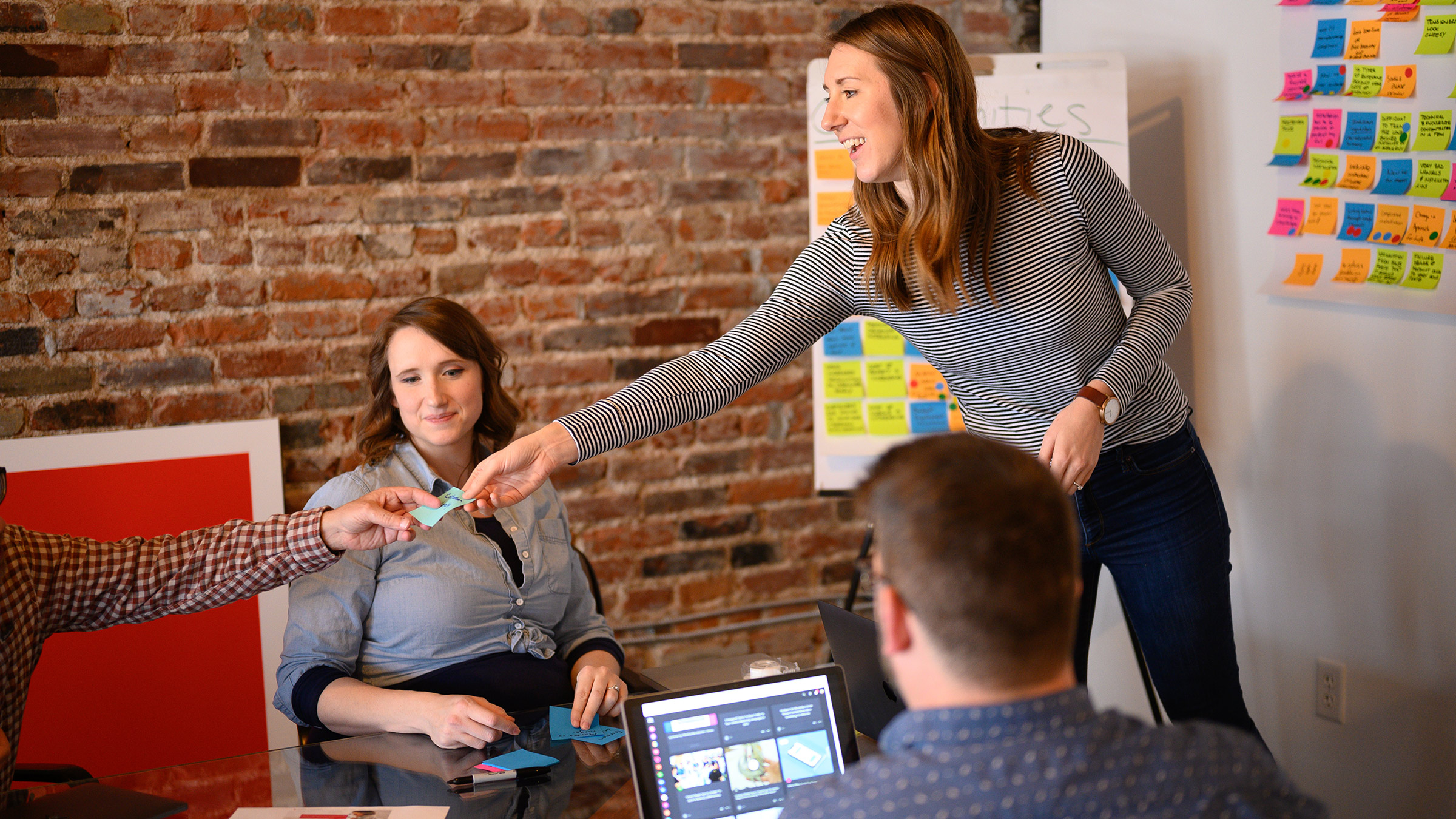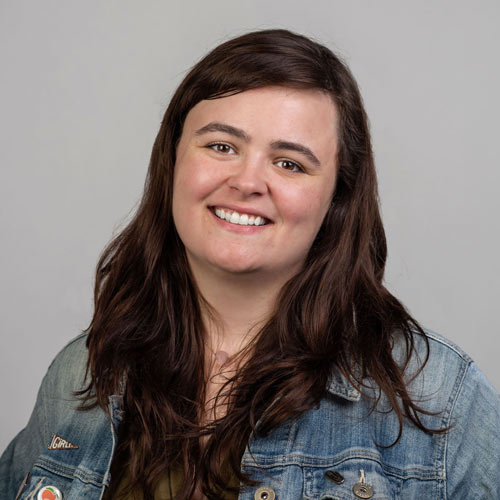Seven Lessons from My First Atomicdust Workshop
The story of branding workshops begins long ago, in the year 2016.
It was before I came to Atomicdust, but as the legend goes, the team noticed that some clients could benefit from a condensed version of our branding program—instead of months, we could spend a day or two in a room with our clients, collaborating, brainstorming and determining brand positioning, brand language, the customer journey map or site map.
And thus, Atomicdust workshops were born.
Depending on the type, the workshops include different exercises and agendas, but they all have a few key ingredients in common: members of our team and the client team come together and use our combined knowledge and different perspectives to solve a problem.
Fast forward to last month when I was invited to participate in my first Atomicdust workshop. The client was Andy’s Frozen Custard, a delicious (not biased at all, it’s tasty) frozen custard quick service restaurant that’s experiencing rapid growth throughout the country. Initially, the company hired Atomicdust to help with rolling out a new product and marketing new stores. But along the way, we discovered the company’s brand positioning could also use some love.
Andy’s has established design guidelines and a beloved reputation in its most permeated markets, but it needed language that could act as inspiration and direction for marketing going forward. And as Andy’s enters new markets, it needed a way to explain the company and product to people who have never heard of Andy’s—or frozen custard at all.
It was the perfect opportunity for a branding workshop.
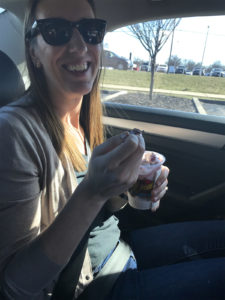
So a group from Atomicdust gathered our laptops, easel notepads and markers and hopped on 44 toward Springfield, Missouri, where Andy’s is headquartered. And yes, we stopped for a treat at an Andy’s on the way.
Here’s what I learned:
1. Everyone is capable of greatness.
A diverse team is essential to a great workshop. It’s good to have a developer participate in a site map workshop, and a writer should be in the room if we’re working on brand language. But diverse mindsets are just as important. Joining us from the Andy’s team were people from marketing, IT, finance, operations and even Andy himself.
The IT and finance guys came up with some pretty good ideas. Many people who’d described themselves as “not writers’ wrote beautiful and moving brand positioning statements that practically received applause. Our team doesn’t live and breathe the frozen custard industry like the Andy’s team does, but we brought an outside perspective and unbiased opinions. It’s not about who serves in specific roles during a typical work day; but about what people can create together.
2. Know thyself.
Jesse McGowan, one of the partners here at Atomicdust, led the workshop, and mentioned this at the very beginning: If you’re loud, work with the loud people. If you’re quiet, group up with the quiet folk. Involving people from different backgrounds and with diverse perspectives won’t do much good if they can’t be heard because of one or two dominating personalities. I know that when gone unchecked, I can dominate a conversation. So, when we broke into small groups, I tried to facilitate and support brainstorming, instead of flooding the conversation with my own thoughts and ideas.
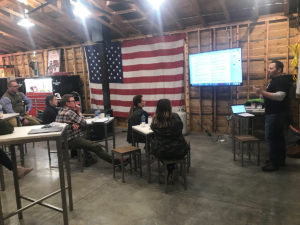
3. Get out.
A workshop won’t be successful if the participants are distracted, which is why we make sure they’re done off-site whenever possible. The Andy’s workshop was held in a big garage/woodshop-type structure near the edge of Springfield. Phones put away and miles from the Andy’s office, everyone was able to avoid disturbances and focus on the project.
4. Watch the clock.
The Atomicdust branding program includes several phases, including stakeholder calls, marketplace research, creating the design and language, and usually a cycle or two of edits. A typical project takes months. Our workshops allow us to condense a chunk of that work and focus into a day or two.
But I was surprised at how fast-paced the workshop was as well. We worked quickly to get our thoughts on paper and did short cycles of writing and then critiquing, trying not worry about tweaking the language until it was print-ready. It’s more about the ideas that come immediately and fine-tuning later.
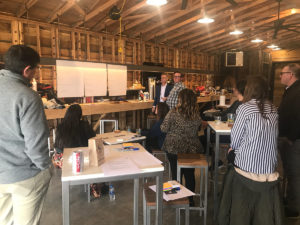
5. Every idea deserves to be said…
One of the most important aspects of the workshop is collaboration, so participants had to quickly get over any self-consciousness around their ideas. And like any brainstorm, the ideas leading up to the final product are just as vital as what you end up with. One person would shout out an idea, and that would inspire five more. More than once I hesitated to share my idea at first, but when I did, it would get some nods or smiles and then people would riff on the concept with even better ideas. Or sometimes it would die there. But it was said, and that’s what matters.
6. …but don’t get stuck on one thing.
Sometimes you just need to let an idea die. If you contribute something and people like it, that’s awesome. And if they don’t, you can even bring it up again. As creatives—or even people from other fields who are putting on creative caps for a day—an attachment to our ideas is normal. We’re proud of it and want to see it succeed. But the editing (and cutting) process is just as important as the creation. If something doesn’t stick, move on to the next idea.
7. The only constant is change.
One of the best brainstorms we had was when we realized our verbiage was getting too serious for a lighthearted brand. We spent 20 minutes coming up with fun phrases that could be included in the positioning language. The brainstorm wasn’t on the agenda, and it set us back a few minutes, but it served as an important reminder that if you don’t like where things are headed, you can—and should—course correct.
On a larger scale, Jesse left the workshop with ideas of things he wants to improve for next time; ways to be more streamlined and productive, new exercises to incorporate. Every client brings a unique set of needs and problems to solve, so sometimes the group gets stuck, team members disagree on the details, or the final plan doesn’t get fully flushed out by the end of the day. But just as we work to help clients change for the better, the workshops will keep evolving.
Want to know more about our brand workshops? Read more or email Erika.
Let’s stay in touch! Keep up with the latest from Atomicdust.
Subscribe to our email list for all the latest news, events and monthly marketing tips from our team.
